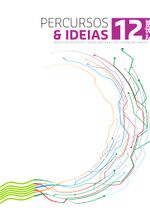Doc: Rota Turística do Jogo do Pau em Cabeceiras de Basto
Sobre
- Relevância: ★★★
- Título: Rota Turística do Jogo do Pau em Cabeceiras de Basto: Breve Introdução à Representação Social desta Maestria na Literatura Portuguesa
- Publicação: Percursos & Ideias, 12, 9, publicado em 24-03-2022
Publicação feita na revista ciêntifica do ISCET "Percursos & IDEIAS" em Março de 2022
Abstract
The Jogo do Pau (in English, “The Stick Game”) is a martial art developed mainly in rural areas, where the stick was a weapon of easy access and firearms were scarce. Until the middle of the 20th century, in the north of Portugal, a rural society prevailed. It needed to defend itself, be it from wild animals or serious altercations over issues such as water, land, women or any other reason. It was amidst this social context that the Jogo do Pau came into being, with its crude and virile technique. With the opening up of rural society to urbanisation and the subsequent emigration of its people, this art form made its way into the cities and adapted itself accordingly. In this article, we aim to present a brief journey through portuguese literature. Methodologically we chose to quote three works, and, in this way, create a route to transport the reader to Cabeceiras de Basto – a municipality which has applied for the recognition of Jogo do Pau as an Intangible Cultural Heritage of Portugal. A bibliographical review and the fieldwork carried out by the authors within the scope of the study to be submitted in the aforementioned application, have been used.
Ler a publicação
Links externos
Ver também
- Consulte toda a Bibliografia
